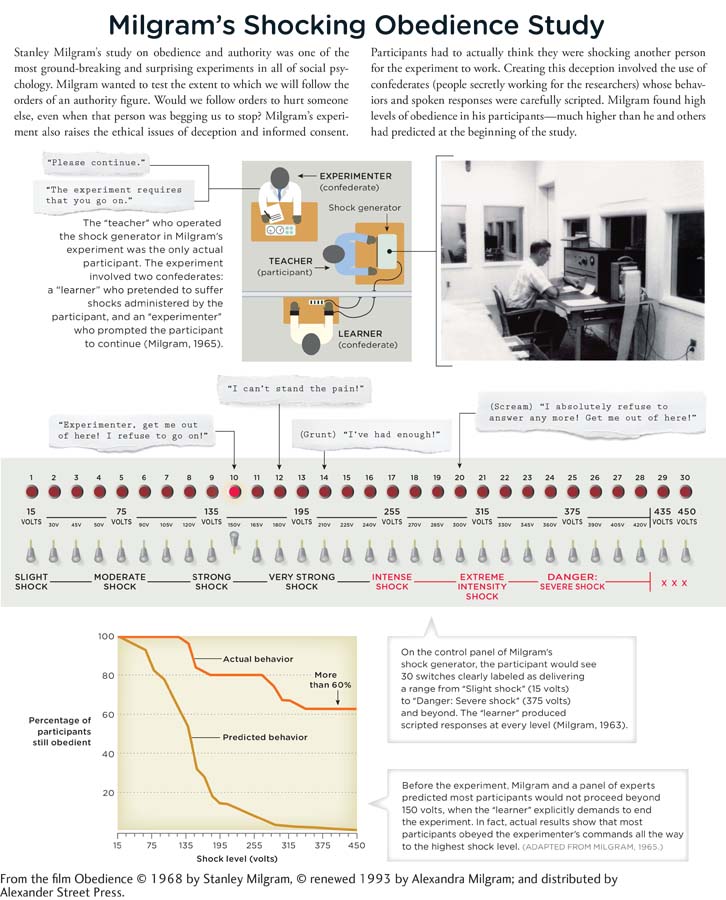Chapter 1. Chapter
Infographic
Scientific American: Psychology
Infographic Activity 14.2: Milgram's Shocking Obedience Study
Milgram's Shocking Obedience Study

Stanley Milgram’s study on obedience and authority was one of the most ground-breaking and surprising experiments in all of social psychology. Milgram wanted to test the extent to which we will follow the orders of an authority figure. Would we follow orders to hurt someone else, even when that person was begging us to stop? Milgram’s experiment also raises the ethical issues of deception and informed consent. Participants had to actually think they were shocking another person for the experiment to work. Creating this deception involved the use of confederates (people secretly working for the researchers) whose behaviors and spoken responses were carefully scripted. Milgram found high levels of obedience in his participants—much higher than he and others had predicted at the beginning of the study.
Click the image to enlarge.
Click "Next" to continue.
1.1 Quiz
1. Which of the following circumstances from history do you think would be most applicable to the research done by Stanley Milgram?
| A. |
| B. |
| C. |
| D. |
2. In Milgram’s experiment protocol, some people acted like participants even though they were actually part of an elaborate set up. What term is used for people who operate in this capacity?
| A. |
| B. |
| C. |
| D. |
3. In Milgram’s electric shock experiment who was the only person who would receive an actual electrical shock?
| A. |
| B. |
| C. |
| D. |
4. Danica and Eileen are discussing today’s psychology presentation. They were taught about Stanley Milgram’s classic research study addressing people’s willingness to obey an instruction to deliver increasingly painful shocks to a helpless victim. Danica expresses her feeling that she would have refused to continue as soon as the victim objected, but Eileen reminds her that ______ of the participants in the original research study delivered the highest voltage of electrical shocks!
| A. |
| B. |
| C. |
| D. |
5. Before conducting his obedience experiment, Stanley Milgram asked a panel of experts how much electricity they thought the “teachers” would be willing to administer to the “learners.” That panel predicted that most people would not go beyond an electric shock of ______ volts, but as you know now that panel was very mistaken!
| A. |
| B. |
| C. |
| D. |